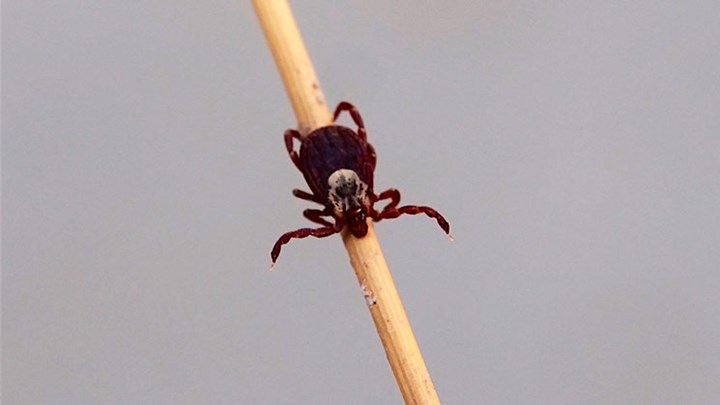
by Ron Spomer - Sunday, June 17, 2018

Some outdoorsmen worry too much about Lyme disease. Some don’t worry enough.
Lyme disease isn’t about to become our next pandemic, but it continues to ruin the health of thousands. Fever, severe headaches, facial palsy, joint and muscle pain, arthritis. About 22,000 cases are confirmed each year and an additional 15,000 are suspected. Then there are spotted fevers, rickettsiosis, tularemia, relapsing fever, Heartland virus, Powassan disease … and they all have one thing in common: ticks.
Ticks. Primitive, creepy, crawly, blood-sucking, woodland monsters sometimes no bigger than this period. Ticks are ugly, disgusting arachnids, but they can’t really hurt you. They really can’t even bite. They just probe under your skin cells with a pair of tiny, long, hooked, finger-like mouth parts called chelicerae, painlessly piercing your skin. Then they insert a microscopic feeding trough called a hypostome that funnels blood out of you and into the flat tick, which slowly swells to the size of a small grape before detaching to go lay a few thousand eggs.
No, it’s not the tick that hurts you. It’s the pathogens it carries. Protozoa, bacteria, viruses. Those are what you should fear. All you have to do to avoid them is defeat the attack of the tick.
Ticks live in brush, weeds, and tall grass. They perch on the ends of vegetation with two front legs spread and poised to grab passing meals—mice, deer, you. They cannot jump or fly. They do not fall on you from overhead. They must grab you. Avoid brushing against vegetation and you should go tick free.
On the odd chance you actually do contact Nature, you can still easily defeat ticks. Here’s how:
■ ■ ■
Editor’s Note: As the author notes, Lyme disease can be serious with approximately 22,000 cases detected each year. Please heed his precautions as those of us who live outdoors are at a greater risk of infection. On a personal note, I contracted the disease as did my father, who passed away from a heart attack that was, in part, due to complications from Lyme disease. As I think of Dad today on Father’s Day, I can’t help but wonder if he’d still be here if not for that parasite.
E-mail your comments/questions about this site to:
[email protected]
